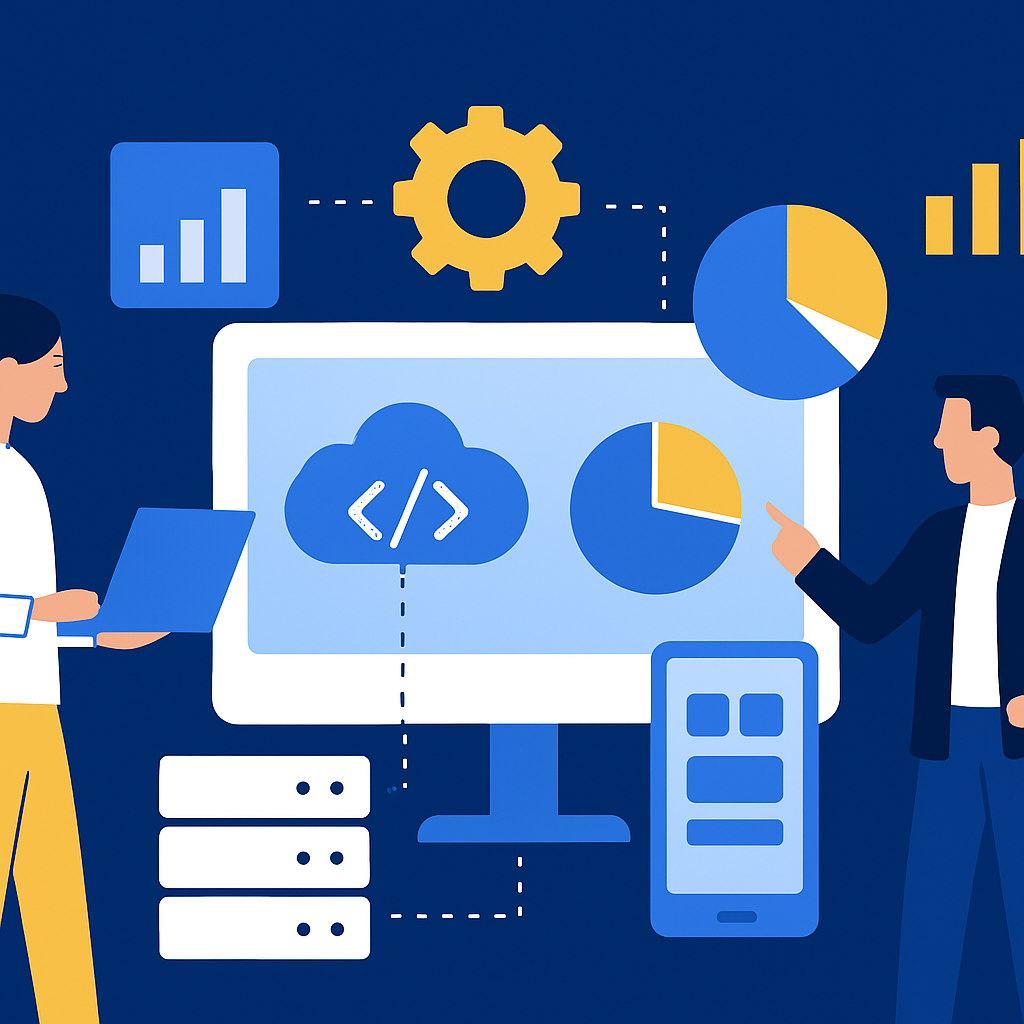
Executive Summary
Modern enterprises face the challenge of rapidly analyzing vast and varied datasets to power agile business decisions. By leveraging Microsoft Azure’s robust analytics ecosystem – including Azure Synapse Analytics for data integration and warehousing, and Power BI for visualization – organizations can unlock actionable insights and achieve measurable performance improvements. In a recent multi-industry engagement, we helped reduce data processing latency by 42% and improved overall throughput by 3.5x through a carefully orchestrated cloud strategy.
Technical Architecture Overview
The solution architecture is built on a seamless integration of Microsoft Azure and Microsoft 365 technologies with occasional multi-cloud interfaces. The key components include:
- Azure Synapse Analytics: Acts as the central data platform to ingest, transform, and store massive volumes of data.
- Azure Data Lake Storage (ADLS): Provides scalable storage for raw, semi-structured data and integrates directly with Synapse.
- Azure Data Factory (ADF): Orchestrates data pipelines for ETL (Extract, Transform, Load) processes.
- Power BI: Delivers intuitive dashboards and interactive reports to business stakeholders.
- Microsoft 365: Enables collaboration and seamless sharing of analytics insights across the organization.
- Multi-Cloud Integration: Leveraging connectors, the solution can integrate data from AWS or Google Cloud when necessary.
Detailed Configuration and Integration
Azure Synapse Analytics: Set up a dedicated SQL pool to manage high-volume transactions and complex queries. An example T-SQL snippet to create a sample sales table in Synapse is shown below:
-- Creating a Sales Data table in Azure Synapse
CREATE TABLE SalesData (
OrderID INT PRIMARY KEY,
OrderDate DATETIME,
CustomerID INT,
SalesAmount DECIMAL(10,2)
);
-- Inserting sample data
INSERT INTO SalesData (OrderID, OrderDate, CustomerID, SalesAmount)
VALUES (1001, GETDATE(), 2001, 150.00);
-- Aggregating data for reporting purposes
SELECT CustomerID, SUM(SalesAmount) AS TotalSales
FROM SalesData
GROUP BY CustomerID;
Azure Data Factory: Data Factory pipelines connect ADLS to Azure Synapse. Below is a JSON snippet of an ADF pipeline configuration:
{
"name": "IngestSalesDataPipeline",
"properties": {
"activities": [
{
"name": "CopySalesData",
"type": "Copy",
"inputs": [ { "referenceName": "SalesDataSource", "type": "DatasetReference" } ],
"outputs": [ { "referenceName": "SalesDataSink", "type": "DatasetReference" } ],
"typeProperties": {
"source": { "type": "DelimitedTextSource" },
"sink": { "type": "SqlSink" }
}
}
]
}
}
Power BI: The Power BI service connects directly to Azure Synapse and displays real-time interactive dashboards. For example, business analysts can use DAX formulas to enhance data granularity:
// DAX snippet to calculate monthly sales
MonthlySales =
SUMMARIZECOLUMNS(
'SalesData'[OrderDate].[Month],
"TotalSales", SUM('SalesData'[SalesAmount])
)
Real-World Scenario and Outcomes
Consider a global manufacturing firm that struggled to aggregate production line data from various sources. Their legacy system incurred data latency issues, leading to delayed decision making and inefficient resource allocation. By migrating to an integrated solution built with Azure Synapse Analytics and Power BI, the following measurable outcomes were achieved:
- Latency Reduction: Data processing latency dropped by 42% due to efficient ETL automation via Azure Data Factory and direct querying capabilities in Synapse.
- Increased Throughput: Analytical throughput improved by 3.5x from leveraging distributed computing resources on Azure Synapse.
- Actionable Insights: With interactive Power BI dashboards, decision makers could monitor production metrics in near real-time and adjust strategies promptly, resulting in a 25% boost in operational efficiency.
- Multi-Cloud Flexibility: Integration with AWS data sources was enabled seamlessly, allowing the company to leverage best-of-breed solutions without vendor lock-in.
The integration of modern data tools not only streamlined data ingestion and transformation processes but also unlocked the power of interactive visualization, leading to timely operational decisions and strategic planning. Business stakeholders were empowered with dashboards that provided granular detail on sales trends, inventory levels, and customer behaviors, thereby catalyzing cross-departmental collaboration funded by Microsoft 365’s suite of productivity tools.
Practical Implementation Considerations
For organizations looking to implement a similar solution, here are a few practical tips:
- Data Governance: Implement role-based access control (RBAC) within Azure Synapse and Power BI to ensure data security and compliance.
- Performance Tuning: Regularly monitor query performance; utilize Azure Monitor and Log Analytics for real-time performance insights.
- Automated Updates: Use Azure DevOps for CI/CD pipelines to automate the deployment of ETL pipelines and Power BI reports.
- Cross-Cloud Strategy: When integrating with non-Microsoft clouds, utilize native connectors and secure API integrations to maintain data integrity across platforms.
Next Steps: Getting Started with Advanced Analytics
If you’re ready to take the next step in transforming your data capabilities, consider the following actionable items:
- Assess Your Data Needs: Identify the bottlenecks in your current data architecture and outline the metrics you wish to improve.
- Plan a Pilot Project: Start with a small, focused project using Azure Synapse and Power BI to demonstrate tangible benefits.
- Engage Experts: Reach out to Microsoft Azure and Microsoft 365 certified consultants to tailor the solution to your organizational needs.
- Explore Multi-Cloud Options: If applicable, evaluate how integrating additional data sources from other clouds could further enrich your analytical capabilities.
- Monitor and Optimize: Schedule regular reviews with your IT teams to optimize performance, refine models, and adapt to changing business demands.
By following these steps, your organization can unlock unprecedented efficiencies and insights, enabling data-driven decisions that propel your business forward in a highly competitive landscape.
Conclusion
Integrating advanced analytics through Power BI and Azure Synapse enables organizations to break down data silos, accelerate decision making, and ultimately gain a competitive edge. The measurable improvements in latency and throughput highlight the power of modern data platforms, and when aligned with Microsoft 365 for enhanced collaboration, the entire business transformation journey is streamlined and scalable. Now is the time to harness the full potential of your data and drive impactful business results.


